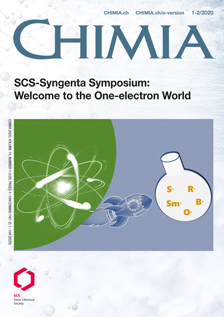Intermolecular Radical C–H Bond Activation: A Powerful Tool for Late Stage Functionalization
DOI:
https://doi.org/10.2533/chimia.2020.23Keywords:
C–c bond formation, C–h bond activation, Hat, Radical, Radical chain reactionsAbstract
The synthesis of complex molecules via radical reactions involving carbon–carbon and carbon–heteroatom bonds has become a very successful approach. Radical chemistry has long been dominated by the use of tin-based reagents. Those strongly contributed to the development of the field, allowing one to achieve spectacular transformations, most of which being difficult or impossible to achieve under ionic conditions, and giving access to invaluable kinetics data that paved the way for the development of improved protocols and the design of new synthetic strategies. However, tin reagents and tin byproducts are often toxic and they proved to make purification steps sometimes tedious. In this context, tin-free methods have progressively gained in interest. This short review aims at providing the reader with alternative methods employing C–H bonds in place of the classical alkyl halides to generate, via an intermolecular hydrogen atom transfer (HAT), the radical species. Examples of carbon–carbon and carbon–heteroatom bond formation using this type of C–H bond activation approach will be provided, from early reports to the more recent developments.Downloads
Published
2020-02-26
Issue
Section
Scientific Articles
License
Copyright (c) 2020 Fabrice Dénès

This work is licensed under a Creative Commons Attribution-NonCommercial 4.0 International License.
How to Cite
[1]
Chimia 2020, 74, 23, DOI: 10.2533/chimia.2020.23.







